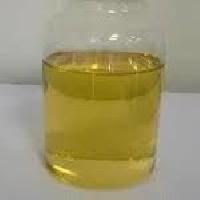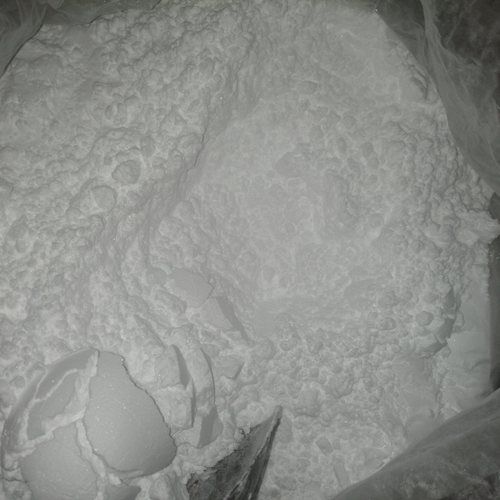Welcome to Our Company
Cyclopentyl Ketone
Product Details:
- Storage Room Temperature
- Melting Point -50 degree centigrade
- Application Industrial
- Molecular Formula C5H9CO
- Density 0.954 Gram per cubic centimeter(g/cm3)
- Physical Form Liquid
- Click to View more
X
Cyclopentyl Ketone Price And Quantity
- 1 Kilograms
Cyclopentyl Ketone Product Specifications
- -50 degree centigrade
- Industrial
- C5H9CO
- Room Temperature
- 0.954 Gram per cubic centimeter(g/cm3)
- Liquid
Cyclopentyl Ketone Trade Information
- Mumbai
- Letter of Credit (L/C) Telegraphic Transfer (T/T) Cash Advance (CA)
- 100 Kilograms Per Month
- 5 Week
- Yes
- If order is confirmed we will reimburse the sample cost
- North America Eastern Europe Western Europe
- All India
Product Description
Cyclopentyl Ketone is well known for its pure composition and standard shelf life. As a suitable reagent, this chemical is required to produce polycyclic and bicyclic aromatic hydrocarbons. This chemical also serves as an effective intermediate of ketamine and pharmaceutical grade intermediate in relevant arena. It slightly dilutes in ethyl acetate and chloroform. Its flash point is more than 100 degree centigrade and its boiling point is 130 degree/5 mm. This chemical needs to be stored under nitrogen ambient temperature to preserve its original quality for long.
Uses of Cyclopentyl Ketone:
1. Pharmaceutical intermediates: Cyclopentyl ketone serves as a valuable building block in the synthesis of various pharmaceutical compounds. It can undergo various chemical reactions to create more complex structures that are important in drug development.
2. Flavor and fragrance industry: Cyclopentyl ketone is used as a raw material in the production of flavoring agents and fragrances. It imparts specific scents and tastes to various products.
3. Solvent: It can be used as a solvent in chemical reactions and processes. Its unique chemical properties make it suitable for certain applications.
4. Polymer synthesis: Cyclopentyl ketone can be used in the synthesis of polymers and copolymers, contributing to the development of specific materials with desired properties.
5. Organic synthesis: It acts as a reactant in various organic reactions, such as aldol condensation, Grignard reactions, and reductions, leading to the formation of different organic compounds.
6. Research and development: Cyclopentyl ketone is used in research laboratories as a starting material for various experiments, especially in the field of organic chemistry.
7. Agrochemicals: It may find application in the synthesis of certain agrochemicals, such as pesticides and herbicides.
8. Photochemical studies: Cyclopentyl ketone has been used in photochemical studies to investigate certain photochemical processes and reactions.
Cyclopentyl Ketone Properties:
1. Physical state: Cyclopentyl ketone is a colorless to pale yellow liquid at room temperature. It is soluble in many organic solvents, such as ethanol and diethyl ether.
2. Odor: It has a distinct and somewhat pungent odor.
3. Boiling point: The boiling point of cyclopentyl ketone is around 130-133 degree centigrade.
4. Melting point: It solidifies into a crystalline solid at a temperature of about -50 degree centigrade.
5. Density: The density of cyclopentyl ketone is approximately 0.954 g/cm3.
6. Refractive index: Its refractive index is about 1.464.
7. Chemical reactivity: As a ketone, cyclopentyl ketone has a carbonyl group (C=O) which gives it characteristic chemical reactivity. It can undergo various organic reactions such as nucleophilic addition, reduction, and condensation reactions.
8. Stability: It is relatively stable under standard conditions but should be handled and stored with proper care to avoid exposure to heat, flame, or incompatible substances.
9. Flammability: Cyclopentyl ketone is flammable and should be kept away from sources of ignition.
10. Hazardous properties: Like many organic compounds, cyclopentyl ketone should be handled with caution as it may be harmful if ingested, inhaled, or absorbed through the skin. Prolonged exposure or high concentrations may cause irritation to the respiratory system, skin, and eyes.
FAQ:
1. What is cyclopentyl ketone?
Ans: Cyclopentyl ketone is an organic compound with the chemical formula C5H9CO. It is a member of the ketone functional group and consists of a cyclopentane ring with a carbonyl group (C=O) attached.
2. What are the uses of cyclopentyl ketone?
Ans: Cyclopentyl ketone finds various uses in different fields, including pharmaceutical intermediates, flavor and fragrance industry, solvent in chemical reactions, polymer synthesis, organic synthesis, research and development, agrochemicals, and photochemical studies.
3. What are the physical properties of cyclopentyl ketone?
Ans: Cyclopentyl ketone is a colorless to pale yellow liquid at room temperature. It has a distinct odor and a boiling point of around 130-133 degree centigrade. Its melting point is approximately -50 degree centigrade, and the density is about 0.954 g/cm3. The refractive index is around 1.464.
4. Is cyclopentyl ketone flammable?
Ans: Yes, cyclopentyl ketone is flammable and should be kept away from sources of ignition.
5. What are the potential hazards of cyclopentyl ketone?
Ans: Cyclopentyl ketone may be harmful if ingested, inhaled, or absorbed through the skin. Prolonged exposure or high concentrations may cause irritation to the respiratory system, skin, and eyes. It should be handled with proper safety precautions, including the use of appropriate personal protective equipment (PPE).
6. How should cyclopentyl ketone be stored?
Ans: Cyclopentyl ketone should be stored in a cool, well-ventilated area, away from heat, flames, and incompatible substances. It is advisable to keep it in tightly sealed containers and away from direct sunlight.
7. Can cyclopentyl ketone be used in the production of pharmaceuticals?
Ans: Yes, cyclopentyl ketone serves as a valuable building block in the synthesis of various pharmaceutical compounds. It can undergo various chemical reactions to create more complex structures that are important in drug development.
8. Is cyclopentyl ketone toxic to the environment?
Ans: Cyclopentyl ketone is not known to have significant environmental toxicity. However, it should be handled responsibly to prevent any potential harm to the environment.
9. Can cyclopentyl ketone react with other chemicals?
Ans: Yes, as a ketone, cyclopentyl ketone has a carbonyl group (C=O) that gives it characteristic chemical reactivity. It can undergo various organic reactions such as nucleophilic addition, reduction, and condensation reactions.
10. Can cyclopentyl ketone be used as a solvent?
Ans: Yes, cyclopentyl ketone can be used as a solvent in chemical reactions and processes due to its solubility in many organic solvents. However, its use as a solvent might be limited compared to other more commonly used solvents.
Tell us about your requirement

Price:
Quantity
Select Unit
- 50
- 100
- 200
- 250
- 500
- 1000+
Additional detail
Mobile number
Email









